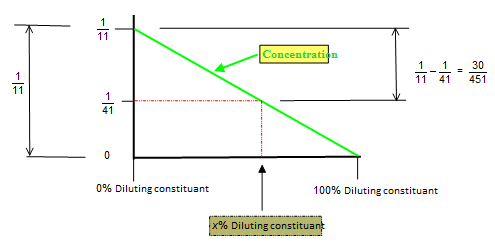Question #9f4fd
1 Answer
As a blended material:
'~~~~~~~~~~~~~~~~~~~~~~~~~~~~~~~~~~~
Or: add 30 more measures of the diluting material
Explanation:
Consider the ratio of 1:10.
This consists of 1 part of something added to 10 parts of something else. So the total amount of parts is 11.
Thus a 1:10 ratio is a concentration of
Where the bar means repeating for ever.
And 1:40
.~~~~~~~~~~~~~~~~~~~~~~~~~~~~~~~
You have a
What ever you use to measure the 10 use to measure a further 30 giving you
I use the principle of a straight line graph to plot the change in concentration as you gradually add more and more of one of the constituent. Thus able to determine the exact blend needed.

The bottom axis measures the amount of diluting constituent from none at all to nothing but the diluting constituent.
So we have:
The amount of the original; 1:10 mixture is:
'~~~~~~~~~~~~~~~~~~~~~~~~~~~~~~~~~~
Check

